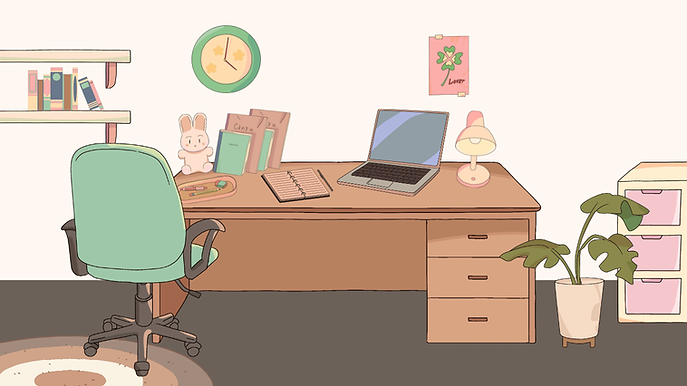top of page
How to Apologize to a Teacher
Dealing with Teachers

How to Apologize to a Teacher: 50 Ideas for Apologizing to a Teacher (Inspired by Research & Books)
We've all been there - that moment where we realize we messed up and need to apologize to our teacher. It can feel awkward and scary, but it's important to remember that everyone makes mistakes. A sincere apology can go a long way in repairing a relationship and showing you've learned from your actions. Here's a guide with 50 ideas to help you apologize effectively, inspired by books and research on communication and emotional intelligence:
Understanding the Situation:
- Reflect on your actions: What exactly did you do wrong? Was it disrespectful, disruptive, or something else? (Source: "How to Talk So Kids Will Listen & Listen So Kids Will Talk" by Adele Faber & Elaine Mazlish)
- Consider their perspective: How might your actions have made your teacher feel? Frustrated? Disrespected? (Source: "Emotional Intelligence" by Daniel Goleman)
- Identify the root cause: Was it a bad day, a misunderstanding, or a deeper issue?
- Write down your thoughts: Organizing your apology and reflecting on your actions can help you stay focused. (Source: Journaling for Emotional Health)
Crafting a Sincere Apology:
- Start with "I'm sorry for...": Be specific about what you're apologizing for. (Source: "The Five Languages of Apology" by Gary Chapman)
- Acknowledge the impact: Explain how your actions affected the teacher and the class. (Source: "Nonviolent Communication" by Marshall B. Rosenberg)
- Take responsibility: Avoid excuses or blaming others. Own up to your mistakes. (Source: "Daring Greatly" by Bren� Brown)
- Express regret: Show genuine remorse for your behavior.
- Keep it concise and clear: Avoid rambling or being overly dramatic.
- Focus on the future: State your intention to do better in the future. (Source: "The 7 Habits of Highly Effective People" by Stephen Covey)
Delivering the Apology:
- Apologize in person: A face-to-face apology shows sincerity.
- Choose the right time and place: Ask your teacher for a moment to talk privately. (Source: "Crucial Conversations" by Kerry Patterson)
- Maintain eye contact: Show that you are being truthful and respectful. (Source: "Body Language" by Julius Fast)
- Speak clearly and respectfully: Use a sincere and apologetic tone.
- Be prepared to listen: Give your teacher a chance to respond and express their feelings.
- Accept consequences gracefully: Don't argue or become defensive. (Source: "The Power of Now" by Eckhart Tolle)
Showing You Mean It:
- Follow through with promises: If you committed to changing your behavior, make sure you do.
- Put in extra effort: Show your teacher you're dedicated to improving.
- Participate actively in class: Be attentive and engaged in your learning.
- Treat everyone with respect: Extend your improved behavior to all classmates and staff.
Creative Apology Ideas:
- Write a heartfelt letter: Express your apology in a sincere and thoughtful letter.
- Create a card: A handmade card adds a personal touch.
- Offer to help: Ask if there's anything you can do to make it up to your teacher.
- Draw a picture: If you're artistic, a drawing can express remorse.
- Write a poem: Share your apology through a heartfelt poem.
Specific Scenarios & Apologies:
- For being disruptive: "I'm sorry for talking out of turn and distracting the class. I'll be more mindful of my behavior in the future."
- For not completing work: "I apologize for not having my assignment finished. I understand this shows disrespect for your time. I'll work harder to meet deadlines."
- For being disrespectful: "I was wrong to speak to you that way. I understand how disrespectful it was, and I'm truly sorry."
- For cheating: "I'm ashamed that I cheated on the test. I betrayed your trust and disrespected the learning process. I will strive to earn my grades honestly from now on."
- For missing a deadline: "I apologize for not submitting the project on time. I understand this created extra work for you, and I'll work on managing my time better."
Additional Tips & Insights:
- Don't expect immediate forgiveness: Rebuilding trust takes time.
- Learn from your mistakes: Use this experience as an opportunity for growth.
- Remember everyone makes mistakes: Your teacher was once a student too.
- Focus on repairing the relationship: Your goal is to restore respect and trust.
- Seek support if needed: Talk to a counselor, parent, or trusted adult for guidance.
Preventing Future Issues:
- Improve your organizational skills: Use a planner and set reminders to stay on top of assignments.
- Develop better study habits: Find strategies that work for you to stay focused and engaged.
- Communicate with your teacher: If you're struggling, ask for help.
- Practice self-awareness: Pay attention to your emotions and how they affect your actions.
- Seek constructive feedback: Ask your teacher for advice on how to improve your behavior and academic performance.
Remember:
- A sincere apology is a powerful tool.
- Everyone deserves respect, including teachers.
- Mistakes are opportunities for growth and learning.
- Building strong relationships takes effort and communication.
- Be patient with yourself and the process of rebuilding trust.
Beyond the Apology:
- Volunteer your time: Offer to help with classroom tasks or after-school activities.
- Share positive feedback: Let your teacher know when you appreciate their teaching or support.
- Be a role model: Demonstrate positive behavior and encourage your peers to do the same.
- Maintain open communication: Keep your teacher updated on your progress and any challenges you face.
- Remember, a sincere apology paired with changed behavior is the best way to mend a relationship.
Note: This list is inspired by various books and research on communication, emotional intelligence, and apology. Tailor your apology to your specific situation and consider the personality and preferences of your teacher.
bottom of page